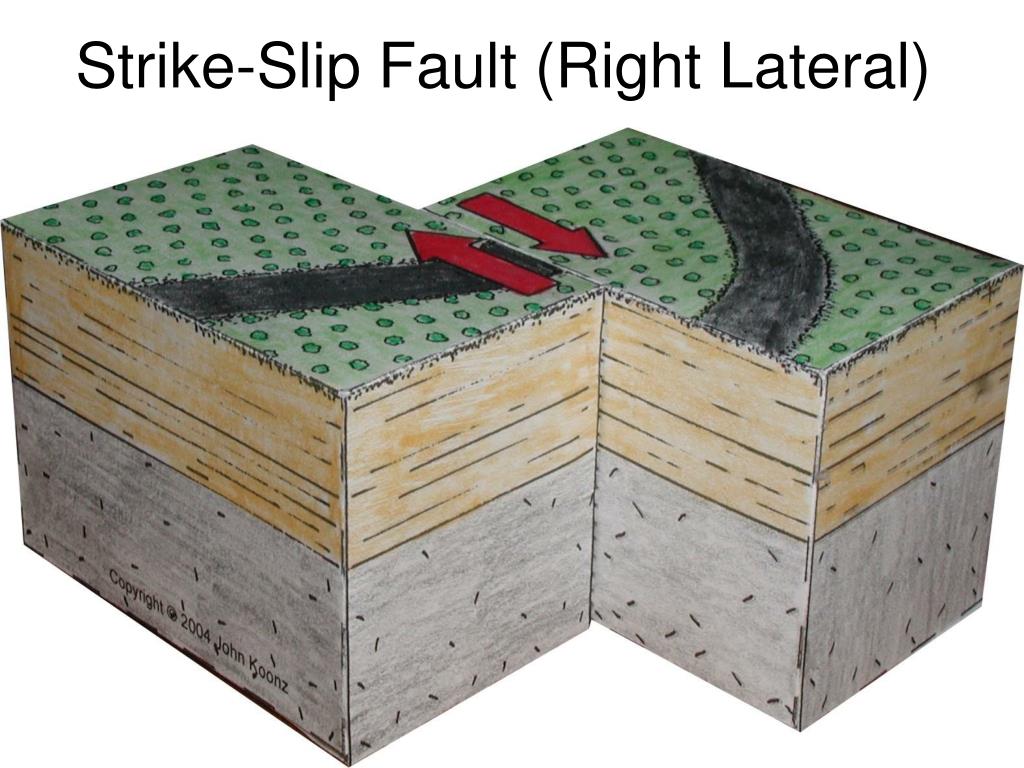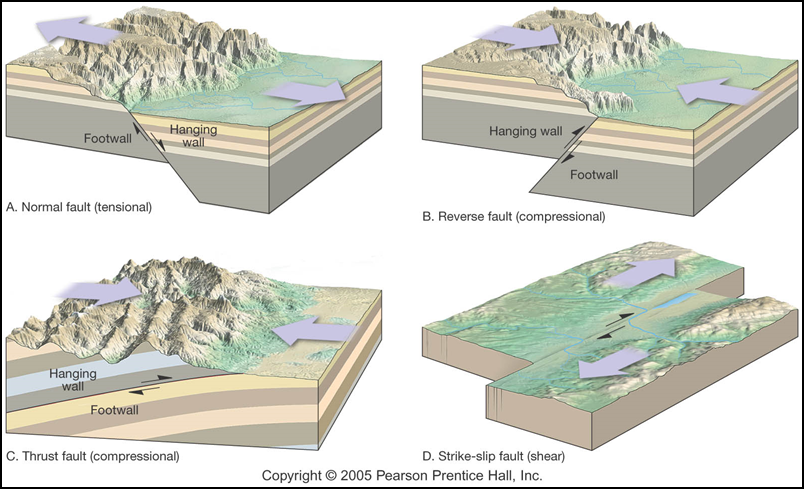

It can count higher than most cats.Į-mail C.E. This cat has just spotted some strike-slip fault motion. Because you have to step to the right to go from one side of the volcano to the other, this is a right-lateral strike-slip fault. This is the remains of a cinder cone that erupted along a strike-slip fault in the southern end of Death Valley, CA. If it requires a jog to the left, it was a left-lateral fault that did the offsetting. If you have to go to your right to make the connection, you have a right-lateral fault. To determine what type you've got, figure out which way a particular object, say a road or a fence, was offset by the fault motion. Strike-slip faults are either right-lateral or left-lateral.

Strike slip faults involve motion in a horizontal plane: they are best spotted from the air! If the strike-slip fault is right lateral, then when you walk down the offset linear feature toward the fault surface, upon reaching the piercing point you will. This makes them relatively easy to spot in a road cut or mountain side. Block diagram and map view for Question 7.Normal faults, reverse faults, and thrust faults all involve a substantial amount of vertical motion. On the left, it will be a left lateral fault (stand at the fault plane facing the other side, and you would have to go to the left to find the offset features). The motion will be toward the black back (compressional) quadrant. Right Lateral Transform Fault.ģD interactive model of Figure 17: Figure 18. For a strike slip fault, the beach ball will indicate whether the fault is right or left lateral. This is true no matter which block you are standing on, because it is relative motion! Sometimes, transform faults will be marked with the relative motion directions on either side of the fault (Figures 17 and 18). In a right-lateral transform fault, your friend on the opposite block moves towards your right. In a left-lateral transform fault, your friend on the opposite block moves towards your left. Imagine you are standing on one side of a transform fault looking across the fault to a friend on the other side. The fault plane can be vertical or at an angle ( Figures 17 and 18). In transform or strike-slip faults, one block moves laterally relative to the other block – it does not matter which one is the hanging wall or footwall. Thrust Fault.ģD interactive model of Figure 16: Transform or Strike-slip Faults Reverse Fault.Ī reverse fault that has a shallowly dipping fault plane (perhaps less than about 45 degrees) is called a thrust fault (Figure 16). In map view, the hanging wall rocks will be older than the footwall rocks, due to erosion of the uplifted side ( Figure 15). This motion can be determined by tracing the offset of the beds in a vertical motion in a block diagram. In reverse faults, the hanging wall moves upwards relative to the footwall. Normal Fault.ģD interactive model of Figure 14: Reverse Faults In map view, the hanging wall rocks will be younger than the footwall rocks, due to erosion of the uplifted side. In normal faults, the hanging wall moves downward relative to the footwall ( Figure 13 and Figure 14). There are three main types of faults: normal faults, reverse faults, and transform or strike-slip faults. A good way to remember this is to imagine a mine tunnel running along a fault the hanging wall would be where a miner would hang a lantern and the footwall would be at the miner’s feet.įigure 13 (Click on link): Hanging wall, footwall, and scarp of a normal fault. During the 1906 earthquake in the San Francisco region, roads, fences, and rows of trees and bushes that crossed the fault were offset several yards, and the road across the head of Tomales Bay was offset almost 21 feet, the maximum offset recorded. In a dip-slip system, the footwallis below the fault plane and the hanging wall is above the fault plane. Geologists refer to this type fault displacement as right-lateral strike-slip.

Dip-slip motion consists of relative up-and-down movement along a dipping fault between two blocks, the hanging wall and footwall. To tell whether the fault is right lateral or left lateral, simply imagine yourself standing on one side of the fracture in the earth, looking across it. Normal and reverse faults display vertical, also known as dip-slip, motion. If it is visible at the surface, it is called a fault scarp (Figure 13). The plane along which motion occurs is called the fault plane. Faults are the places in the crust where brittle deformation occurs as two blocks of rocks move relative to one another.


 0 kommentar(er)
0 kommentar(er)
